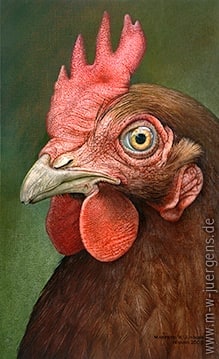
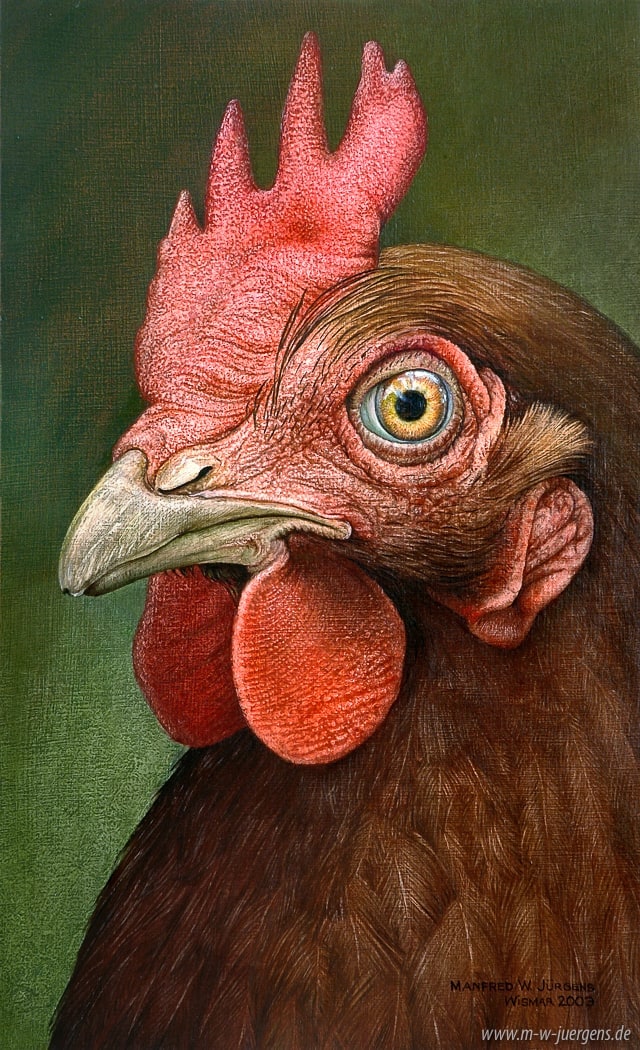
A collector friend of mine asked me in 2007 for a few words in writing about a picture he had bought from me. On the phone I heard him saying: 'My daughter likes the portrait of your chicken from Ahnebergen.' This is how my first picture story came about.
When I exhibited in the Holly Snapp Gallery in Venice in 2005 ❯ Lucy Mae, 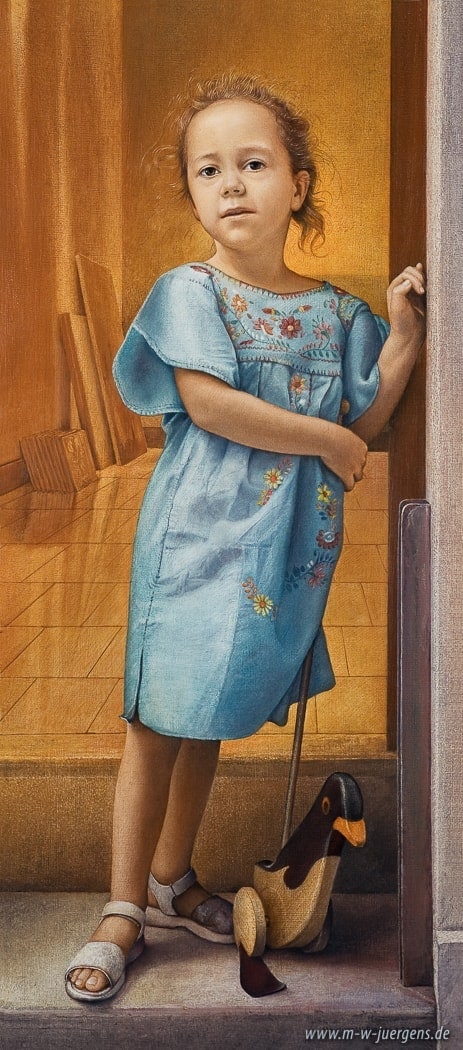 the gallery owner's daughter, wished that her mother would buy her my portrait of a chicken. But she said: Go to your father, he is also a painter, he may paint you a chicken. But he preferred to paint beautiful female students in his palazzo on the Venetian Giudecca.
the gallery owner's daughter, wished that her mother would buy her my portrait of a chicken. But she said: Go to your father, he is also a painter, he may paint you a chicken. But he preferred to paint beautiful female students in his palazzo on the Venetian Giudecca.
Recently, I read the following in the 1884 Brockhaus Conversations Lexicon: In agriculture, there was a time when poultry was considered a necessary evil. 'If you want to perish and don't know how, keep a lot of poultry!' is an old farmer's saying.
Chicken birds live mostly on the ground, fly heavily with rustling wings, feed on everything that can be found on and in the ground such as seeds, insects, worms, buds, etc., make an artless, open nest on the ground in which they hatch many eggs and live mostly in polygamy. In this case the male is much larger and more beautifully colored than the female.
Portraits of roosters, were only to be created in the following years in cities such as ❯ Hamburg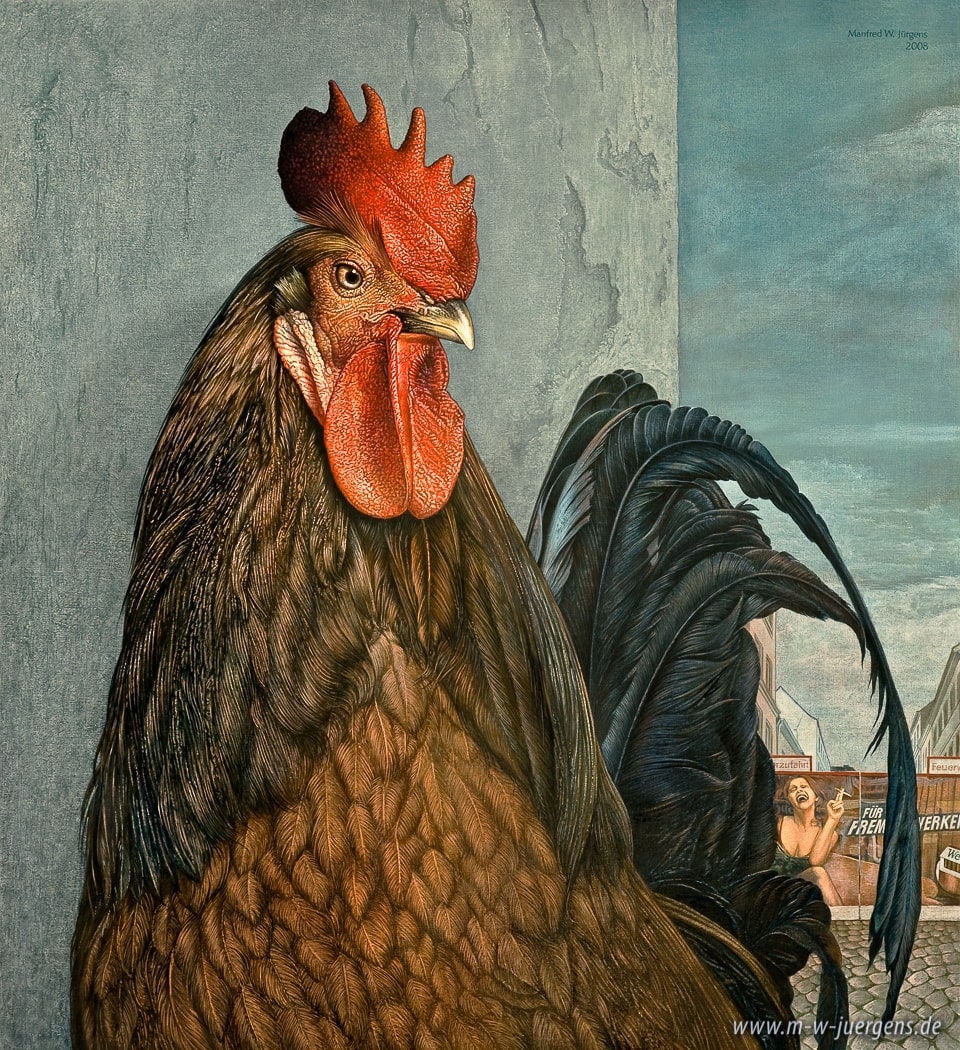 and ❯ Bremen
and ❯ Bremen 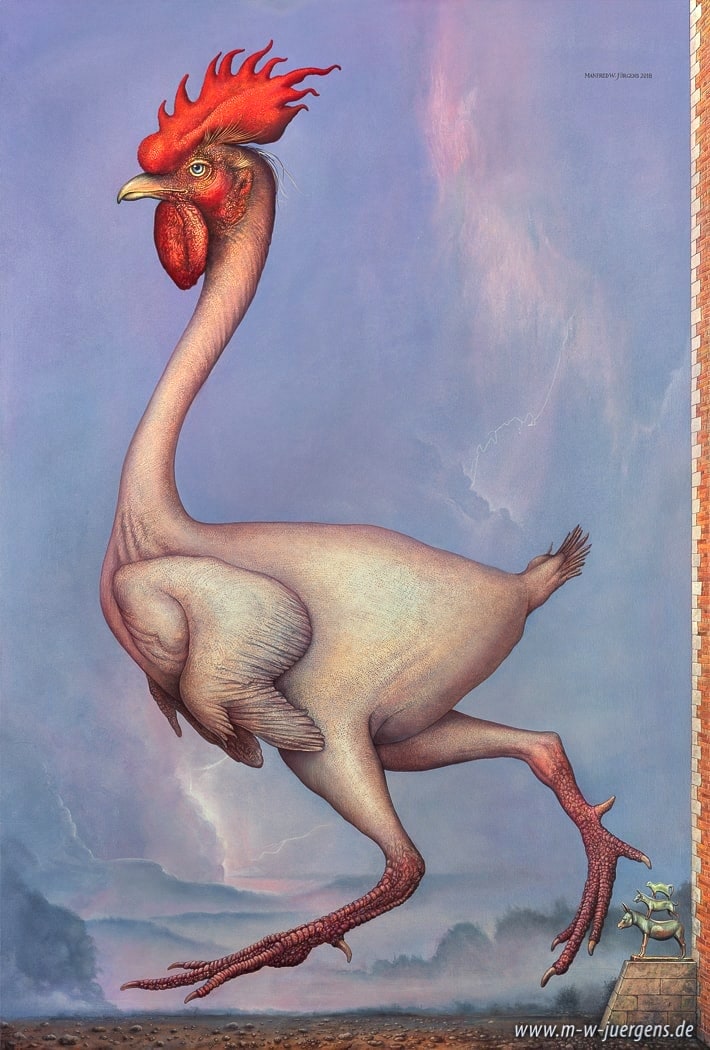 .
.
Memories. In Schönhof in Mecklenburg, the village of my childhood, there was a strange game called chicken catching. During the summer holidays we little village boys invited each other to our farms for this rather time-consuming undertaking. Often two or three came along with their wicker baskets. The first thing to do was to adjust the length of the stick and the strap. The wicker baskets were turned upside down next to each other at the same distance. Under each side we placed a stick with a ribbon attached. We strewed grain under the angled baskets and waited hidden for the hungry chickens for hours. A counting list was kept. If someone pecked under the basket - bang - you pulled the string, the chicken was caught and another line graced the list. Points were considered as respectable successes. The frightened chicken was released immediately and we waited for the next one.
Seldom, I got the most points, since I preferred to draw the chickens while waiting. I loved this game.
Since I once studied Science Graphics in Berlin and also worked for the zoologist ❯ Prof. Dr. Dr. Heinrich Dathe 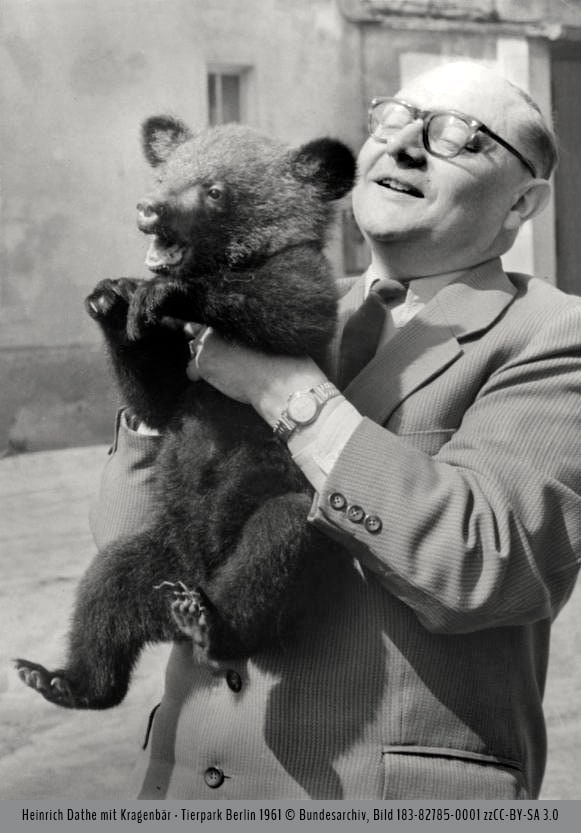 ,I never really lost my zoological view of animals. However, it increasingly mixes with my attitude as a portrait painter.
,I never really lost my zoological view of animals. However, it increasingly mixes with my attitude as a portrait painter.
When ❯ in-laws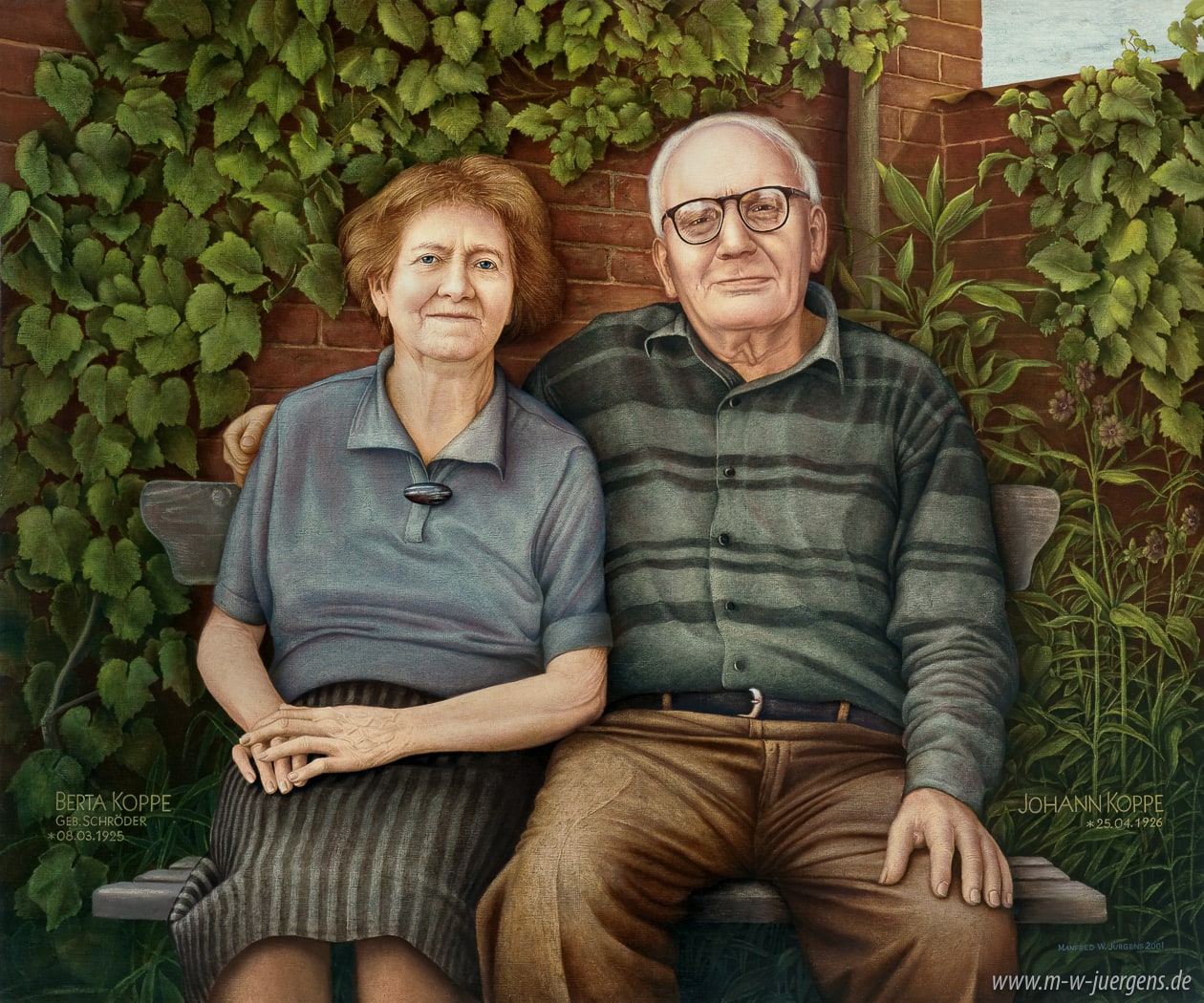 were still alive, my wife and I liked to visit them in the Lower Saxon village called Ahnebergen. Chickens lived there too, of course. I found one particularly beautiful, so definitely worth painting. Since I rarely draw, I started taking photos. On the first day it was only about two hours.
were still alive, my wife and I liked to visit them in the Lower Saxon village called Ahnebergen. Chickens lived there too, of course. I found one particularly beautiful, so definitely worth painting. Since I rarely draw, I started taking photos. On the first day it was only about two hours.
As is well known, chickens are not very tall. In order to get good portraits of them, it was advisable to hold the telephoto lens at the ready and crawl on the stomach, to follow them at a distance of 30 to 40 cm at their head height across the chicken yard. Somehow this situation reminded me of my army days.
Chickens, what strange ghosts. They are constantly pecking and walking restlessly through their poultry life, constantly shaking their heads. There is nothing with calm model seats for the painter, no carefully staged light with spotlights. Yes, I could have painted a chicken in general, but I meant this concrete one in its own beauty.
I got the first sharp photos on the second day, after about four more hours at eye level with the most curious chicken in the village. On the third day, I had the impression that we have known each other forever. The chicken reacted similarly. The rooster continued to send me off. Maybe he was jealous. A rooster has about 10 to 20 chickens. I told him that his life would be too stressful for me. It is still unclear to me why his brides are called Italians. Their excellent laying performance made tempera painting possible for Orthodox monks as early as the 6th century. I also use egg tempera in my painting technique today. Thank the chicken for one of the most durable binders in painting history.
Back to Ahnebergen. My father-in-law asked his daughter on my fourth day of photography with a view on the chicken farm, 'What is he doing there?'. 'Papa, Manfred wants to paint the chicken!' He just shook his head. He was probably worried about his son-in-law's state of mind.
When I showed the painted portrait of my Ahneberger chicken a year later, I heard 'We ate that'.
My collector friend later told me that he had read this story to his little daughter in the kitchen in front of the picture hanging there. She listened very interested, but felt sad about the last sentence. Lotti doesn't like it when animals die.